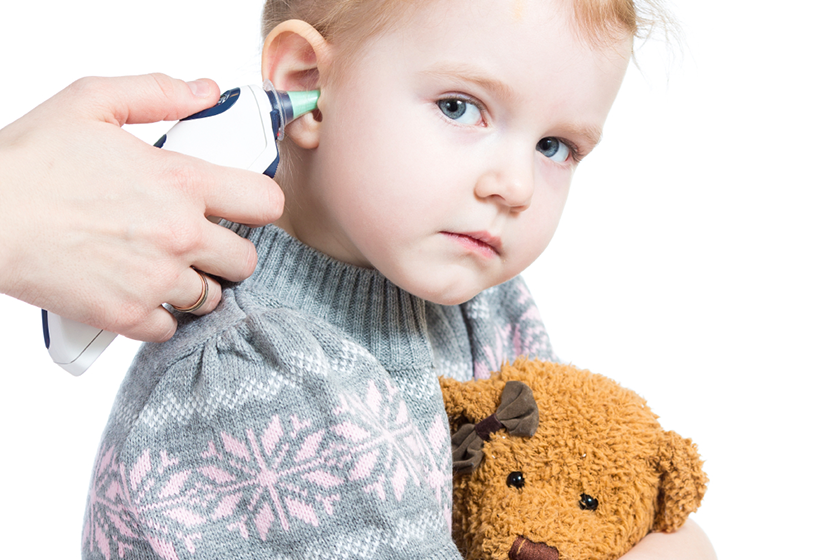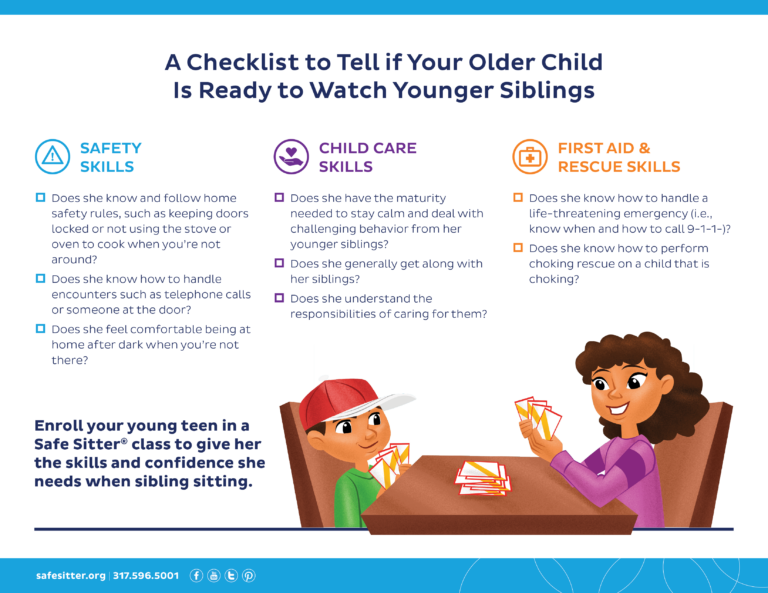How to prevent ear infections in child
How Do You Prevent Ear Infections in Children?
7 ways to reduce risk factors for ear infection in kids
7 ways to reduce risk factors for ear infection in kids
If your child’s ear is hurting, it could be an ear infection, which is an inflammation of the middle ear. Five out of six children will have at least one ear infection by their third birthday. Ear infections are the most common reason parents take their children to see their doctor.
“Although usually not dangerous, ear infections can be very painful and disruptive to a young child’s life,” says Dania Lindenberg, MD, a pediatrician at Scripps Coastal Medical Center Hillcrest. “Fortunately, there are treatments and measures that can be taken at home to prevent ear infections in children.”
Why are ear infections more common in children?
Children are more likely than adults to get ear infections because their immune systems are still developing, which makes it harder for them to fight off infections.
“Young children are the most vulnerable also because they have shorter, softer and more level Eustachian tubes than adults, which makes it more difficult for fluid to drain out of the ear,” Dr. Lindenberg says.
The Eustachian tube connects the upper part of the throat to the middle ear. If the Eustachian tube is swollen or blocked with mucus due to a respiratory illness like a cold, fluid may not be able to drain. The most common ear infection is called acute otitis media, where parts of the middle ear are infected and swollen and fluid is trapped behind the eardrum.
Ear infection symptoms
Common ear infection symptoms in children include:
- Ear pain
- Fever
- Fussiness or irritability
- Rubbing or tugging at an ear
- Difficulty sleeping
Can ear infections be prevented?
“The best way to prevent ear infections is to reduce the risk factors associated with them,” Dr. Lindenberg say.
7 ways to prevent ear infections
Here are things you can do to reduce your child’s risk for ear infections.
1. Vaccinate your child
Make sure your child is up to date on vaccinations. Studies show vaccinated children have fewer ear infections. The pneumococcal vaccine protects against streptococcus pneumoniae, a common cause of middle ear infections. The flu vaccine can also help prevent ear infections.
2. Wash your hands
Children and adults who wash their hands with soap and clean, running water can help prevent the spread of germs that can cause colds and ear infections. Hand-washing is important especially after using the bathroom, when preparing food, before eating, and after coughing, sneezing or blowing your nose.
3. Breastfeed
Breastfeed your baby. Breast milk contains antibodies that can help protect your baby against various illnesses, including ear infections. The American Academy of Pediatrics recommends breastfeeding your baby exclusively for the first six months and can be continued for as long as both mother and baby desire it.
4. Avoid bottles in bed
Avoid bottle feeding your baby when he or she is lying down. Milk may pool in their throat and enter the Eustachian tubes, creating a medium for bacterial growth.
5. Avoid smoke exposure
Don’t smoke and avoid exposure to secondhand smoke. Smoking has been associated with an increased incidence of ear infections. Possible explanations include inflammation of the Eustachian tubes caused by the smoke and reduced effectiveness of our ear’s built-in mucous clearing mechanism in the presence of smoke.
Remember not to allow smoking in or near your home or in your car. Make sure that your children’s daycare and school are tobacco-free zones.
6. Decrease pacifier use
Pacifiers have been associated with an increased incidence of ear infections. The sucking may inhibit proper eustachian tube function.
The American Academy of Pediatrics and the American Academy of Family Physicians recommend weaning children from pacifiers in the second six months of life to prevent middle ear infection.
7. Switch your child to a smaller daycare center
Kids in large centers tend to be exposed to more upper respiratory viruses, predisposing them to ear infections.
When to seek medical care
Be sure to visit your child’s pediatrician if you’re concerned your child has an ear infection.
See your doctor if your child has:
- A fever of 102.2°F (39°C) or higher
- Pus, discharge, or fluid coming from the ear
- Worsening symptoms
- Symptoms of a middle ear infection that last for more than 2–3 days
- Hearing loss
Your doctor can check for an ear infection by looking inside your child’s ear and checking if there is pus in the middle ear.
How are ear infections treated?
Sometimes antibiotics, such as amoxicillin, are needed to treat severe cases right away or cases that last longer than 2–3 days.
For mild cases of middle ear infection, your doctor might recommend watchful waiting to see if antibiotics are needed, or delayed antibiotic prescribing, where the prescription is given with the suggestion to wait 2-3 days to fill it.
Even when antibiotics are prescribed, they won’t take effect for 24 to 48 hours. Fortunately, there are simple, effective ways to reduce your child’s discomfort and pain during an ear infection, including using over-the-counter fever and pain medicine.
Despite your best efforts to prevent them, your kids may still develop recurrent ear infections. If that’s the case, he or she may need to be evaluated by an ear, nose and throat specialist.
Ear Infections in Children, Babies & Toddlers
What is an ear infection?
An ear infection is an inflammation of the middle ear, usually caused by bacteria, that occurs when fluid builds up behind the eardrum. Anyone can get an ear infection, but children get them more often than adults. Five out of six children will have at least one ear infection by their third birthday. In fact, ear infections are the most common reason parents bring their child to a doctor. The scientific name for an ear infection is otitis media (OM).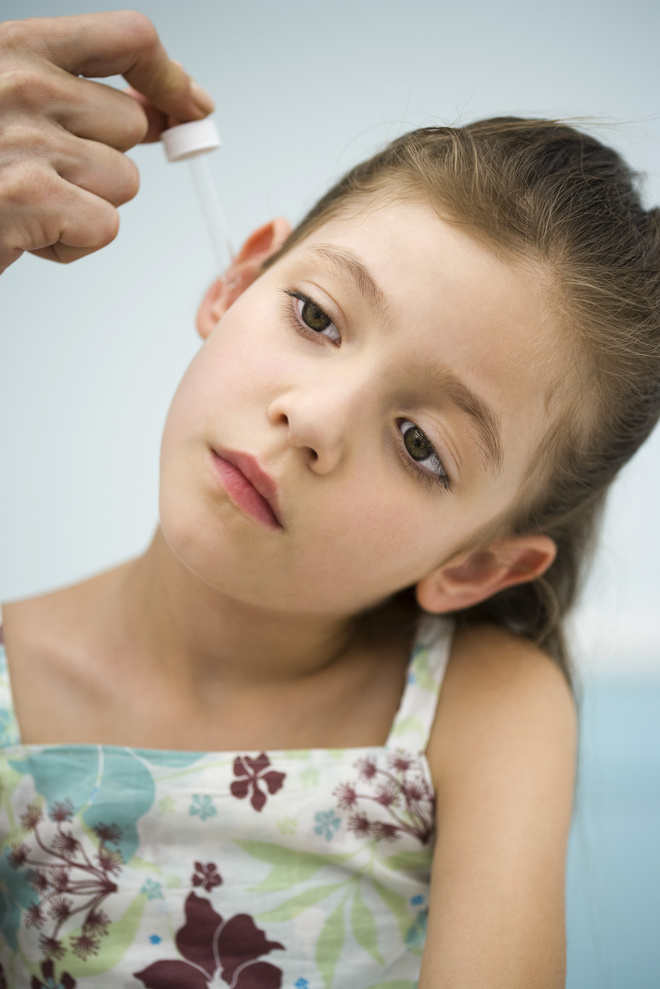
What are the symptoms of an ear infection?
There are three main types of ear infections. Each has a different combination of symptoms.
- Acute otitis media (AOM) is the most common ear infection. Parts of the middle ear are infected and swollen and fluid is trapped behind the eardrum. This causes pain in the ear—commonly called an earache. Your child might also have a fever.
- Otitis media with effusion (OME) sometimes happens after an ear infection has run its course and fluid stays trapped behind the eardrum. A child with OME may have no symptoms, but a doctor will be able to see the fluid behind the eardrum with a special instrument.
- Chronic otitis media with effusion (COME) happens when fluid remains in the middle ear for a long time or returns over and over again, even though there is no infection. COME makes it harder for children to fight new infections and also can affect their hearing.
How can I tell if my child has an ear infection?
Most ear infections happen to children before they’ve learned how to talk. If your child isn’t old enough to say “My ear hurts,” here are a few things to look for:
If your child isn’t old enough to say “My ear hurts,” here are a few things to look for:
- Tugging or pulling at the ear(s)
- Fussiness and crying
- Trouble sleeping
- Fever (especially in infants and younger children)
- Fluid draining from the ear
- Clumsiness or problems with balance
- Trouble hearing or responding to quiet sounds
What causes an ear infection?
An ear infection usually is caused by bacteria and often begins after a child has a sore throat, cold, or other upper respiratory infection. If the upper respiratory infection is bacterial, these same bacteria may spread to the middle ear; if the upper respiratory infection is caused by a virus, such as a cold, bacteria may be drawn to the microbe-friendly environment and move into the middle ear as a secondary infection. Because of the infection, fluid builds up behind the eardrum.
Image
Source: NIH/NIDCDThe ear has three major parts: the outer ear, the middle ear, and the inner ear. The outer ear, also called the pinna, includes everything we see on the outside—the curved flap of the ear leading down to the earlobe—but it also includes the ear canal, which begins at the opening to the ear and extends to the eardrum. The eardrum is a membrane that separates the outer ear from the middle ear.
The outer ear, also called the pinna, includes everything we see on the outside—the curved flap of the ear leading down to the earlobe—but it also includes the ear canal, which begins at the opening to the ear and extends to the eardrum. The eardrum is a membrane that separates the outer ear from the middle ear.
The middle ear—which is where ear infections occur—is located between the eardrum and the inner ear. Within the middle ear are three tiny bones called the malleus, incus, and stapes that transmit sound vibrations from the eardrum to the inner ear. The bones of the middle ear are surrounded by air.
The inner ear contains the labyrinth, which help us keep our balance. The cochlea, a part of the labyrinth, is a snail-shaped organ that converts sound vibrations from the middle ear into electrical signals. The auditory nerve carries these signals from the cochlea to the brain.
Other nearby parts of the ear also can be involved in ear infections. The eustachian tube is a small passageway that connects the upper part of the throat to the middle ear. Its job is to supply fresh air to the middle ear, drain fluid, and keep air pressure at a steady level between the nose and the ear.
Its job is to supply fresh air to the middle ear, drain fluid, and keep air pressure at a steady level between the nose and the ear.
Adenoids are small pads of tissue located behind the back of the nose, above the throat, and near the eustachian tubes. Adenoids are mostly made up of immune system cells. They fight off infection by trapping bacteria that enter through the mouth.
Why are children more likely than adults to get ear infections?
There are several reasons why children are more likely than adults to get ear infections.
Eustachian tubes are smaller and more level in children than they are in adults. This makes it difficult for fluid to drain out of the ear, even under normal conditions. If the eustachian tubes are swollen or blocked with mucus due to a cold or other respiratory illness, fluid may not be able to drain.
A child’s immune system isn’t as effective as an adult’s because it’s still developing. This makes it harder for children to fight infections.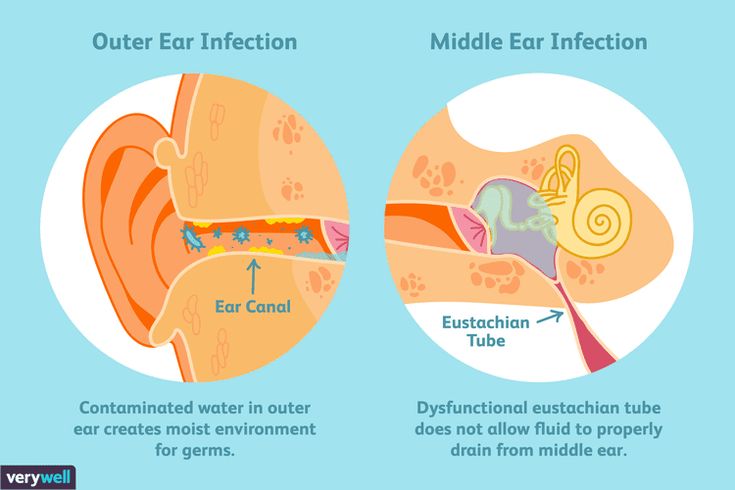
As part of the immune system, the adenoids respond to bacteria passing through the nose and mouth. Sometimes bacteria get trapped in the adenoids, causing a chronic infection that can then pass on to the eustachian tubes and the middle ear.
How does a doctor diagnose a middle ear infection?
The first thing a doctor will do is ask you about your child’s health. Has your child had a head cold or sore throat recently? Is he having trouble sleeping? Is she pulling at her ears? If an ear infection seems likely, the simplest way for a doctor to tell is to use a lighted instrument, called an otoscope, to look at the eardrum. A red, bulging eardrum indicates an infection.
A doctor also may use a pneumatic otoscope, which blows a puff of air into the ear canal, to check for fluid behind the eardrum. A normal eardrum will move back and forth more easily than an eardrum with fluid behind it.
Tympanometry, which uses sound tones and air pressure, is a diagnostic test a doctor might use if the diagnosis still isn’t clear. A tympanometer is a small, soft plug that contains a tiny microphone and speaker as well as a device that varies air pressure in the ear. It measures how flexible the eardrum is at different pressures.
A tympanometer is a small, soft plug that contains a tiny microphone and speaker as well as a device that varies air pressure in the ear. It measures how flexible the eardrum is at different pressures.
How is an acute middle ear infection treated?
Many doctors will prescribe an antibiotic, such as amoxicillin, to be taken over seven to 10 days. Your doctor also may recommend over-the-counter pain relievers such as acetaminophen or ibuprofen, or eardrops, to help with fever and pain. (Because aspirin is considered a major preventable risk factor for Reye’s syndrome, a child who has a fever or other flu-like symptoms should not be given aspirin unless instructed to by your doctor.)
If your doctor isn’t able to make a definite diagnosis of OM and your child doesn’t have severe ear pain or a fever, your doctor might ask you to wait a day or two to see if the earache goes away. The American Academy of Pediatrics issued guidelines in 2013 that encourage doctors to observe and closely follow these children with ear infections that can’t be definitively diagnosed, especially those between the ages of 6 months to 2 years. If there’s no improvement within 48 to 72 hours from when symptoms began, the guidelines recommend doctors start antibiotic therapy. Sometimes ear pain isn’t caused by infection, and some ear infections may get better without antibiotics. Using antibiotics cautiously and with good reason helps prevent the development of bacteria that become resistant to antibiotics.
If there’s no improvement within 48 to 72 hours from when symptoms began, the guidelines recommend doctors start antibiotic therapy. Sometimes ear pain isn’t caused by infection, and some ear infections may get better without antibiotics. Using antibiotics cautiously and with good reason helps prevent the development of bacteria that become resistant to antibiotics.
If your doctor prescribes an antibiotic, it’s important to make sure your child takes it exactly as prescribed and for the full amount of time. Even though your child may seem better in a few days, the infection still hasn’t completely cleared from the ear. Stopping the medicine too soon could allow the infection to come back. It’s also important to return for your child’s follow-up visit, so that the doctor can check if the infection is gone.
How long will it take my child to get better?
Your child should start feeling better within a few days after visiting the doctor. If it’s been several days and your child still seems sick, call your doctor.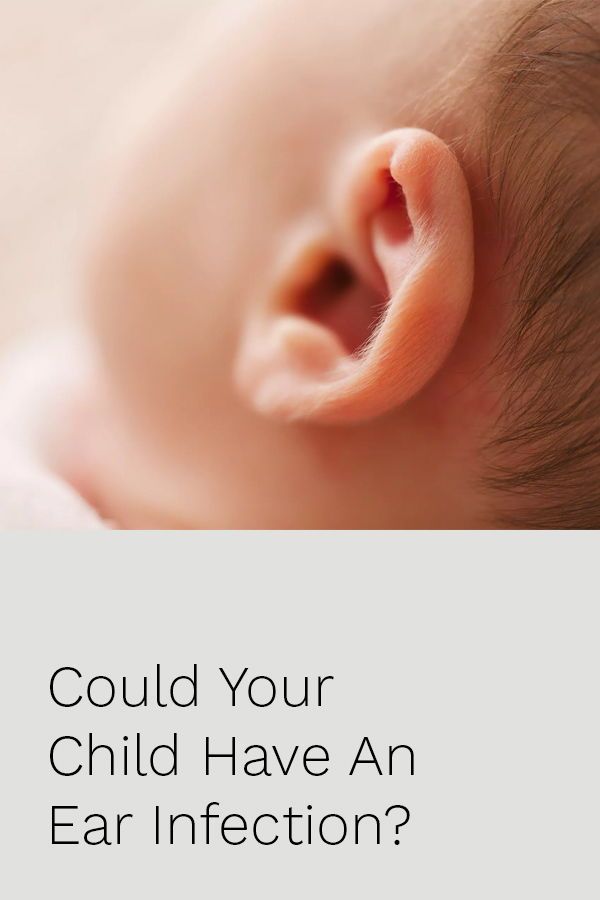 Your child might need a different antibiotic. Once the infection clears, fluid may still remain in the middle ear but usually disappears within three to six weeks.
Your child might need a different antibiotic. Once the infection clears, fluid may still remain in the middle ear but usually disappears within three to six weeks.
What happens if my child keeps getting ear infections?
To keep a middle ear infection from coming back, it helps to limit some of the factors that might put your child at risk, such as not being around people who smoke and not going to bed with a bottle. In spite of these precautions, some children may continue to have middle ear infections, sometimes as many as five or six a year. Your doctor may want to wait for several months to see if things get better on their own but, if the infections keep coming back and antibiotics aren’t helping, many doctors will recommend a surgical procedure that places a small ventilation tube in the eardrum to improve air flow and prevent fluid backup in the middle ear. The most commonly used tubes stay in place for six to nine months and require follow-up visits until they fall out.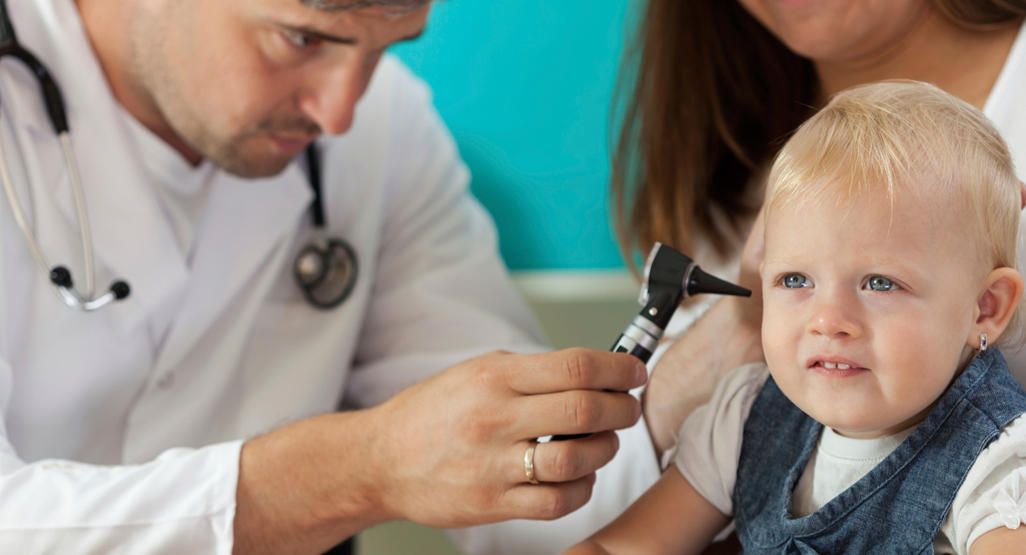
If placement of the tubes still doesn’t prevent infections, a doctor may consider removing the adenoids to prevent infection from spreading to the eustachian tubes.
Can ear infections be prevented?
Currently, the best way to prevent ear infections is to reduce the risk factors associated with them. Here are some things you might want to do to lower your child’s risk for ear infections.
- Vaccinate your child against the flu. Make sure your child gets the influenza, or flu, vaccine every year.
- It is recommended that you vaccinate your child with the 13-valent pneumococcal conjugate vaccine (PCV13). The PCV13 protects against more types of infection-causing bacteria than the previous vaccine, the PCV7. If your child already has begun PCV7 vaccination, consult your physician about how to transition to PCV13. The Centers for Disease Control and Prevention (CDC) recommends that children under age 2 be vaccinated, starting at 2 months of age. Studies have shown that vaccinated children get far fewer ear infections than children who aren’t vaccinated.
 The vaccine is strongly recommended for children in daycare.
The vaccine is strongly recommended for children in daycare. - Wash hands frequently. Washing hands prevents the spread of germs and can help keep your child from catching a cold or the flu.
- Avoid exposing your baby to cigarette smoke. Studies have shown that babies who are around smokers have more ear infections.
- Never put your baby down for a nap, or for the night, with a bottle.
- Don’t allow sick children to spend time together. As much as possible, limit your child’s exposure to other children when your child or your child’s playmates are sick.
What research is being done on middle ear infections?
Researchers sponsored by the National Institute on Deafness and Other Communication Disorders (NIDCD) are exploring many areas to improve the prevention, diagnosis, and treatment of middle ear infections. For example, finding better ways to predict which children are at higher risk of developing an ear infection could lead to successful prevention tactics.
Another area that needs exploration is why some children have more ear infections than others. For example, Native American and Hispanic children have more infections than do children in other ethnic groups. What kinds of preventive measures could be taken to lower the risks?
Doctors also are beginning to learn more about what happens in the ears of children who have recurring ear infections. They have identified colonies of antibiotic-resistant bacteria, called biofilms, that are present in the middle ears of most children with chronic ear infections. Understanding how to attack and kill these biofilms would be one way to successfully treat chronic ear infections and avoid surgery.
Understanding the impact that ear infections have on a child’s speech and language development is another important area of study. Creating more accurate methods to diagnose middle ear infections would help doctors prescribe more targeted treatments. Researchers also are evaluating drugs currently being used to treat ear infections, and developing new, more effective and easier ways to administer medicines.
NIDCD-supported investigators continue to explore vaccines against some of the most common bacteria and viruses that cause middle ear infections, such as nontypeable Haemophilus influenzae (NTHi) and Moraxella catarrhalis. One team is conducting studies on a method for delivering a possible vaccine without a needle.
Where can I find additional information about ear infections?
The NIDCD maintains a directory of organizations that provide information on the normal and disordered processes of hearing, balance, smell, taste, voice, speech, and language.
Use the following keywords to help you search for organizations that can answer questions and provide printed or electronic information on ear infections:
- Otitis media (ear infection)
- Speech-language development
- Early identification of hearing loss in children
NIDCD Information Clearinghouse
1 Communication Avenue
Bethesda, MD 20892-3456
Toll-free voice: (800) 241-1044
Toll-free TTY: (800) 241-1055
Email: nidcdinfo@nidcd.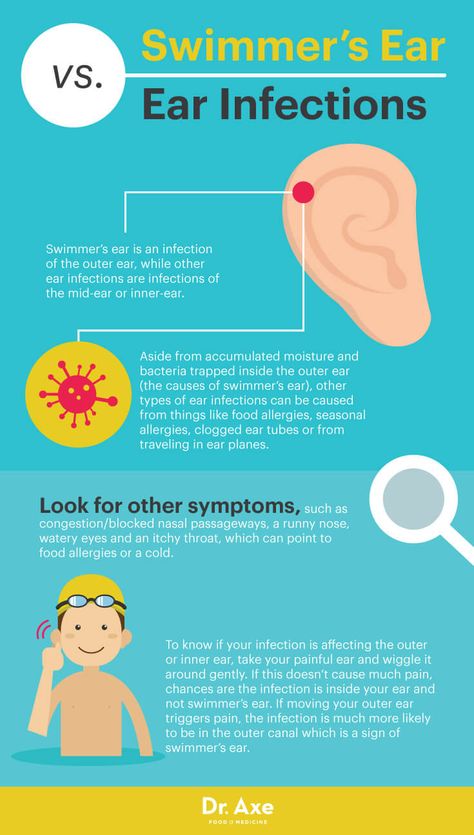 nih.gov
nih.gov
Ear diseases in children - we treat at the medical center "MedMix Plus" in Penza
- Hello. My daughter is 2 years old. We often get sick with colds, a severe runny nose, then the ears get sick with acute pain. Why is there a complication on the ears? Is it possible to get treated at home?
The doctor of the medical center "MedMix Plus" otorhinolaryngologist of the highest category Martynovsky Vladimir Alekseevich answers.
At the first suspicion of an ear disease (worry, altered condition of the child), it is necessary to consult a specialist in a medical center or call a doctor at home. Only with timely and proper treatment, it is possible to save a child from suffering without any unpleasant consequences. You should not get carried away with self-medication, the appointment of drug therapy should be carried out by an ENT doctor after examination and examination.
The reason why children often develop ear diseases is the peculiarity of the structure of their Eustachian tube.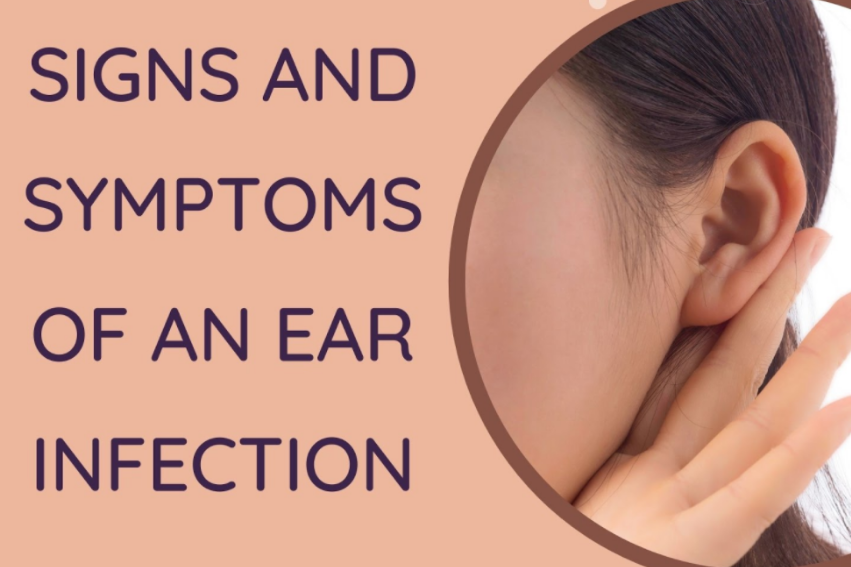 The Eustachian tube connects the throat and middle ear and serves to equalize pressure from both sides on the eardrum, it also protects the middle ear by opening and closing as needed to expel unwanted fluid and germs. In children, it is short, wide, and located approximately at the same level as the pharynx, so it cannot open and close effectively, and this allows germs and secretions to easily enter the ear from the nasopharynx.
The Eustachian tube connects the throat and middle ear and serves to equalize pressure from both sides on the eardrum, it also protects the middle ear by opening and closing as needed to expel unwanted fluid and germs. In children, it is short, wide, and located approximately at the same level as the pharynx, so it cannot open and close effectively, and this allows germs and secretions to easily enter the ear from the nasopharynx.
Two common ear conditions are most common in children. Acute otitis media (AOM). This disease often occurs against the background of SARS (as its complication) in immunocompromised children, premature babies, as well as in babies who are bottle-fed. In most cases, the infection enters the middle ear from the inflamed nasopharynx through the auditory tube. Accompanied by symptoms such as pain, fever, noise in the ear, manifestations of inflammation of the middle ear (located behind the eardrum) with discharge (fluid). The baby becomes lethargic, he may vomit. In infants, otitis media is manifested by restless sleep, loss of appetite and crying. CCA can very quickly turn into purulent, which is characterized by suppuration from the ear, which indicates a rupture of the eardrum and is an indication for urgent medical care.
In infants, otitis media is manifested by restless sleep, loss of appetite and crying. CCA can very quickly turn into purulent, which is characterized by suppuration from the ear, which indicates a rupture of the eardrum and is an indication for urgent medical care.
Otitis exudative media (ESO) is an accumulation of fluid in the middle ear without signs of infection. The Eustachian tubes carry fluid from the ears to the throat. When these tubes become swollen or blocked, fluid (exudate) can accumulate in the ear. It gradually fills the tympanic cavity and auditory tube. Its consistency is thick and viscous. It blocks the functions of the ear. Patients may complain of hearing loss, as well as fullness and tinnitus. With untimely treatment, the disease can go into a chronic stage, complications arise.
Risk factors of the SPR and ESO:
-Commerce of tobacco smoke
-Reperator infections
-marii
-Extension
-adenoids
-Wedeing on the back
-Slave immune system of the child
Avoiding such factors risk can prevent these problems.
DIAGNOSTICS
History plays an important role in diagnosis. It is necessary to find out, after which there was a deterioration in the child's condition. Most often, the ear disease is preceded by acute rhinitis, SARS, sometimes trauma (falling from the crib), allergic diseases.
Diagnosis of acute otitis media and exudative otitis media requires a physical examination by a doctor who can look inside the ear and see fluid or inflammation. An ear examination is carried out using an otoscope or an ear mirror, changes in the external auditory canal and the condition of the eardrum are assessed. The sinuses and oral cavity are also examined.
If otitis is suspected, a general blood test is prescribed to assess the presence of an inflammatory process in the body and its severity (increased ESR, an increase in the number of leukocytes).
If a child's otitis media has lasted longer than 3 months or there is a suspicion of hearing, speech or learning problems, a hearing test should be done.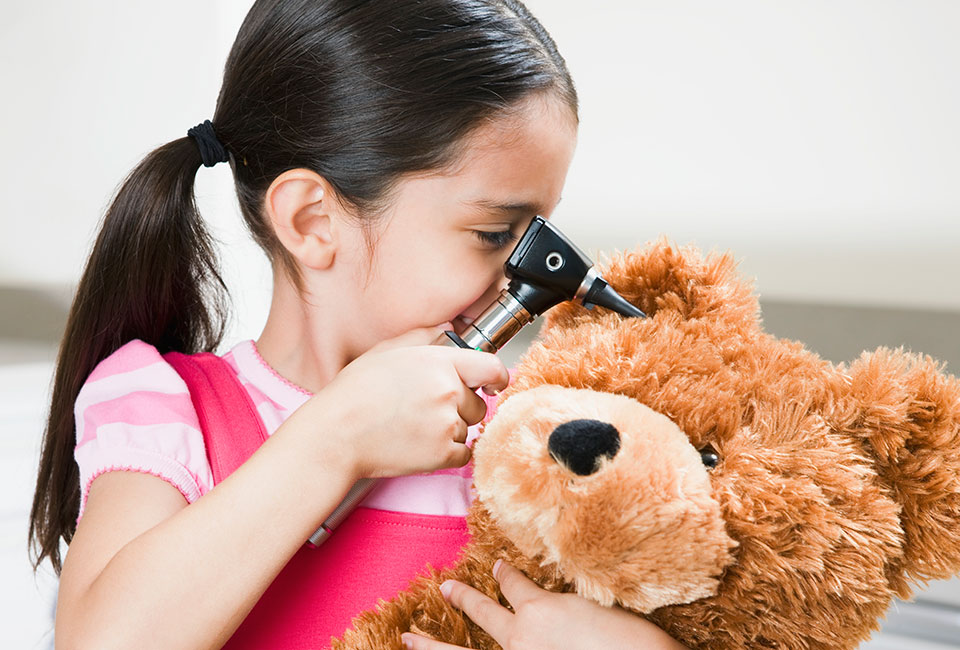 Audiometry may be done to check for hearing loss.
Audiometry may be done to check for hearing loss.
If purulent fluid leaks from the external auditory canal, it is taken for bacteriological examination and sensitivity analysis to antibiotics. In particularly difficult situations (for example, with damage to the inner ear), X-ray examination, CT and MRI are additionally used.
In the medical center "MedMix Plus" for the treatment of AOM and POE, the ears are blown according to Politzer, catheterization of the auditory tube with the introduction of medicinal substances, it is possible to toilet the ear canal using an aspirator and an irrigator (including the removal of sulfuric plugs), take a smear for bacteriological examination.
You can sign up for an ENT in Penza by the following phones:
+7 (8412)204-003, +7 (8412)204-007 - st. New Caucasus, 8 (city district - CENTER)
+7 (8412)206-003, +7 (8412)205-003 - st. Ternovskogo, 214 (district of the city - Ternovka)
Inflammation of the ear in a child: how to prevent complications
Otitis is one of the most common diseases in childhood. According to international statistics, 98% of children suffer from ear inflammation at least once, 60% experience the disease twice. What is effective prevention and how otitis is treated, said the otorhinolaryngologist of the Morozov Children's Hospital, Candidate of Medical Sciences, holder of the status of "Moscow Doctor" Alexander Mikhailovich Ivanenko.
According to international statistics, 98% of children suffer from ear inflammation at least once, 60% experience the disease twice. What is effective prevention and how otitis is treated, said the otorhinolaryngologist of the Morozov Children's Hospital, Candidate of Medical Sciences, holder of the status of "Moscow Doctor" Alexander Mikhailovich Ivanenko.
Why does otitis occur?
Depending on the location of the inflammatory process, otitis can be external, medial or internal. Otitis externa is caused by microbes and fungi, most often manifested by damage to the skin of the ear canal and boils in the auricle.
Acute otitis media is an acute inflammation of the mucous membrane of the middle ear cavity. It develops against the background of respiratory infections. Ear infection occurs through the auditory tube, when mucus from the nasopharynx enters the middle ear and viruses, bacteria, fungal flora freely penetrate from the nasopharynx through the mouth of the auditory tube into the tympanic cavity.
Due to anatomical features, the smaller the child, the shorter and wider the auditory tube connecting the ear cavity with the nasopharynx. Therefore, in an infant who spends most of his time lying down, and in a younger child who does not know how to clean his nose, mucus can flow at any time. In adolescent children, the auditory tube is a tortuous narrow tube, so the infection from the nasopharynx to the middle ear is less likely to pass.
Adenoid vegetations also contribute to the development of ear inflammation. This is an overgrowth of the nasopharyngeal tonsil, which is the main focus of bacterial infection in the nasopharynx.
How does the disease manifest itself?
The main symptom of otitis media is pain in the ear. Children under one year old, as a rule, refuse to eat, because sucking movements cause pain. Babies often touch their ears, rub them, and cry. You can suspect otitis media by pressing on the tragus of the child's auricle.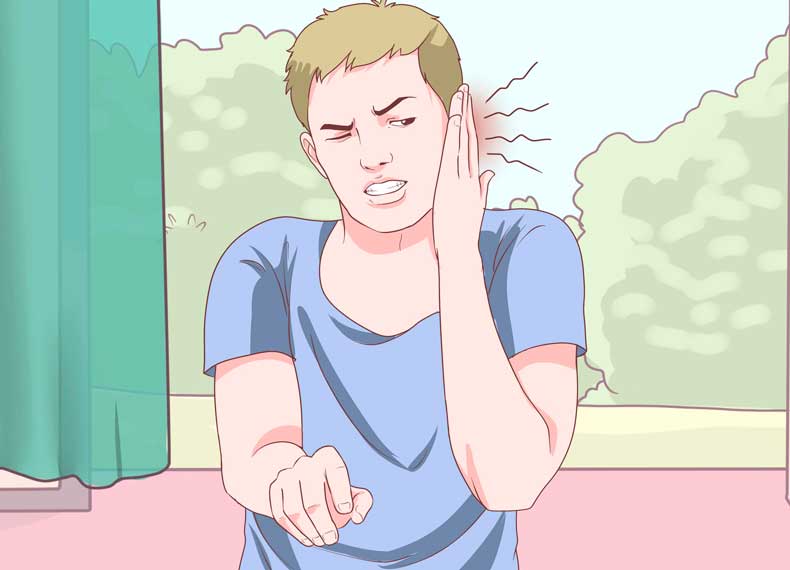
The key method for diagnosing otitis media is otoscopy - an examination by a doctor of the external auditory canal and eardrum using a special instrument.
How to treat otitis?
If the inflammatory process is at the initial stage, outpatient treatment is carried out. The therapy is selected by a pediatrician or an otorhinolaryngologist depending on the child's condition. Be sure to use vasoconstrictor drops in the nose.
If medical assistance is not provided in a timely manner, the inflammatory process turns into acute catarrhal otitis media, and then into acute purulent otitis media, characterized by the appearance of purulent discharge from the ear. In some cases, with inadequate outflow of contents or its absence, the child in the hospital undergoes paracentesis - an incision in the eardrum. The intervention is performed under anesthesia. Then medical conservative treatment continues.
Which preventive measures are most effective?
There is an opinion among many parents that otitis media can be prevented by “covering the ears with cotton wool in the street” or “putting a few hats on the child”.